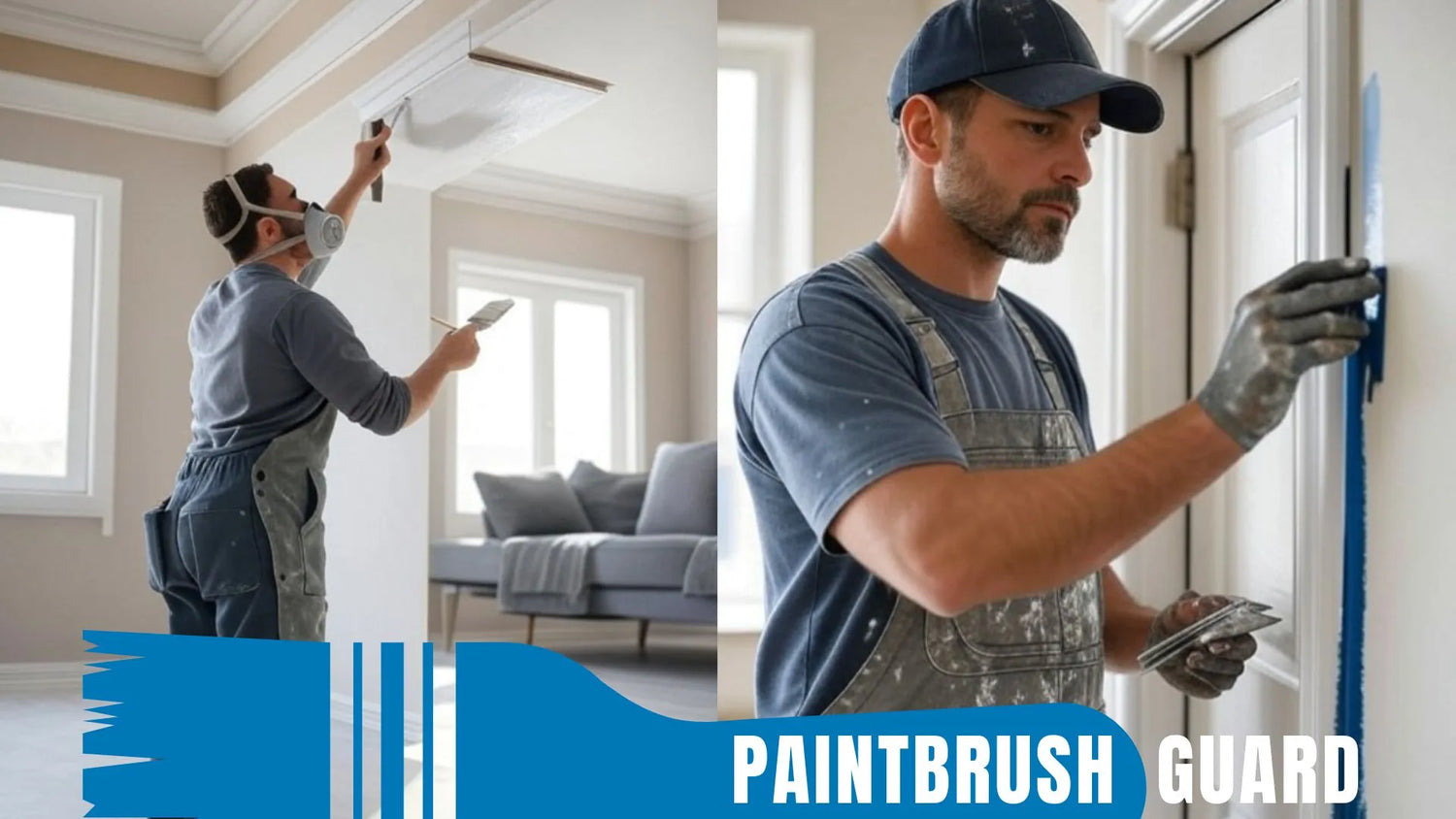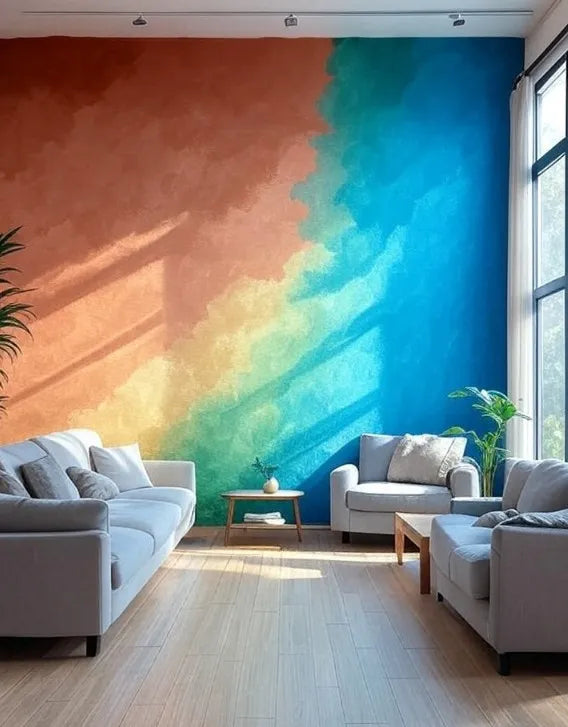Painting old exterior wood is possible but requires thorough preparation to avoid peeling or damage.
Cleaning, sanding and priming ensure a lasting finish. Proper steps and quality paint are essential for rejuvenating aged wood while protecting it from weather and wear.
Check out this article on exterior wood painting
Why Painting Old Exterior Wood Needs Careful Prep
Applying paint directly to old exterior wood often leads to poor adhesion, flaking, or premature wear due to its weathered condition.
Proper preparation is critical to achieve a durable, attractive result. Here’s why skipping prep can cause issues when painting aged wood surfaces.
Risks of Painting Without Preparation
-
Peeling Paint: Dirt, mildew, or old paint residue prevents new paint from sticking, causing flaking.
-
Moisture Damage: Unsealed wood traps moisture, leading to rot or mold under the paint.
-
Uneven Finish: Cracks, splinters, or rough surfaces create a patchy appearance without repairs.
- Reduced Durability: Paint on unprepared wood fades or chips faster, requiring frequent repainting.
These risks highlight the need for preparation before painting old wood.
Is Painting Old Exterior Wood Possible?
You can paint old exterior wood, but it’s not advisable without preparation. Weathered wood often has dirt, mildew, or damaged surfaces that compromise paint adhesion.
In rare cases, minimally weathered wood might accept paint with light sanding, but priming is recommended. Thorough prep is essential for most projects.
Factors Affecting Painting Old Exterior Wood
Several factors determine whether painting old wood directly succeeds or fails:
-
Wood Condition: Well-preserved wood accepts paint better than rotted, cracked, or heavily weathered wood.
-
Climate: Dry climates reduce moisture risks, while humid areas require sealing and breathable paints.
-
Paint Type: Acrylic latex or oil-based paints designed for exterior wood offer better adhesion than standard paints.
- Surface Cleanliness: Dirt, mildew, or peeling paint sabotages adhesion if not removed.
Addressing these factors minimizes issues when painting aged wood.
Preparation Considerations for Painting Old Wood
|
|
|
|
|
|
|
|
|
|
|
|
|
|
|
This table shows why preparation is crucial for painting old wood.
How to Prepare Old Exterior Wood for Painting
To achieve a durable, professional paint job on old exterior wood that lasts 5–10 years, follow these detailed steps to prepare and apply paint effectively.
1. Account for Local Climate Conditions
Adapt your materials to your region’s weather to maximize durability. In humid or rainy areas, prioritize moisture-resistant paints and sealers with mildew inhibitors to prevent mold and water damage.
In dry, sunny regions, select paints with enhanced UV protection to resist fading and cracking. For coastal areas, consider marine-grade products to combat salt corrosion.
Check weather forecasts to avoid painting during wet, windy, or extreme conditions, which can compromise the finish.
Consult local building codes or homeowners’ association rules to ensure your paint color and materials comply with regulations.
2. Clean the Surface Thoroughly
Begin by removing dirt, mildew, and loose paint to create a clean surface for painting. Use a pressure washer on a low setting to avoid damaging the wood, or scrub with a stiff nylon brush and a mild detergent solution (e.g., 1 part bleach to 3 parts water for mildew).
Rinse thoroughly with clean water to remove all soap and debris. Allow the wood to dry completely for 24–48 hours, using a moisture meter to confirm the moisture content is below 15%.
This prevents trapping moisture under the paint, which can lead to peeling or bubbling.
3. Repair and Sand the Wood
Inspect the wood carefully for cracks, splinters, rot, or peeling paint. Scrape off loose or flaking paint with a paint scraper or wire brush, ensuring all unstable layers are removed.
For cracks and small holes, apply exterior-grade wood filler with a putty knife, smoothing it flush with the surface.
For rotted or severely damaged sections, cut out affected areas using a saw and replace with new wood, securing with exterior screws or wood adhesive.
Sand the entire surface with medium-grit sandpaper (80–120 grit) to smooth rough spots, then finish with fine-grit sandpaper (150–220 grit) for a uniform texture.
Wipe down with a damp cloth to remove sanding dust, ensuring a clean surface for priming.
4. Apply a Primer Coat
Choose an exterior-grade, stain-blocking primer formulated for wood to seal the surface and enhance paint adhesion.
This prevents tannins or stains from bleeding through the topcoat. Use a high-quality synthetic brush or roller to apply one even coat, covering all surfaces, including edges, corners, and hard-to-reach areas.
Ensure the primer is compatible with your chosen paint (e.g., oil-based primer for oil-based paint, water-based for acrylic latex).
Check the product label for drying time, typically 4–24 hours, and verify the surface is no longer tacky before proceeding. This step creates a strong foundation for a long-lasting finish.
5. Choose High-Quality Paint
Select an exterior-grade acrylic latex or oil-based paint specifically designed for wood surfaces. Acrylic latex is ideal for most climates due to its flexibility, UV resistance, and breathability, reducing cracking and peeling.
Oil-based paints provide excellent durability but may yellow over time and require longer drying. Opt for paints with mildew-resistant additives and extended warranties (e.g., 15–25 years).
Choose a color suited to your climate: light shades (e.g., white, beige) in sunny areas to reflect heat, darker tones in cooler regions for warmth.
Read the label to confirm the paint’s suitability for exterior wood and its resistance to moisture and UV damage.
6. Apply Paint with Two Coats
Stir the paint thoroughly to ensure consistency, and apply two thin, even coats using a high-quality synthetic brush for detailed areas (e.g., trim, corners) and a roller for larger surfaces (e.g., siding, panels).
Work in small sections to maintain a wet edge, avoiding lap marks. Paint in suitable weather—avoid direct sunlight, high humidity, or temperatures below 50°F (10°C) or above 90°F (32°C), as these can affect drying and adhesion.
Allow the first coat to dry for 4–6 hours (or per label instructions), then lightly sand with 220-grit sandpaper to remove any raised grain or imperfections, wiping clean with a damp cloth. Apply the second coat for full coverage and a smooth, professional appearance.
7. Seal with a Clear Finish
Protect the painted surface by applying an exterior-grade clear sealant, such as a polyurethane or acrylic sealer, to shield against moisture, UV rays, and physical wear.
Use a brush or sprayer to apply a thin, even coat, following the wood’s grain to avoid streaks.
Work in a well-ventilated area and apply in mild weather (50–85°F, low humidity) for optimal curing. Allow the sealant to dry for 24 hours, or as specified on the label, before exposing the wood to rain or heavy use.
This additional layer significantly extends the paint’s lifespan, especially in harsh climates.
These steps guarantee a durable, attractive finish that maximizes paint longevity on old exterior wood, ensuring a professional result that withstands the elements.
Does Painting Old Exterior Wood Affect Home Value?
Painting old exterior wood can boost home value if done well. A smooth, neutral-colored finish (e.g., white, gray) enhances curb appeal and attracts buyers.
Poorly applied paint from skipped prep may deter buyers due to visible damage. In markets valuing natural wood, painting could reduce appeal.
Conclusion: Is Direct Painting of Old Wood Advisable?
Painting old exterior wood without preparation risks peeling, moisture damage, and a short-lived finish. This article has explained why cleaning, repairing, and priming are essential for success.
By following these steps or exploring alternatives, you can achieve a durable, attractive finish for your wood exterior.
Check our exterior house painting guide for more tips, or other releated house painting articles here:
How Long Does Exterior Paint Last on Metal?
Learn how long exterior paint lasts on metal, factors affecting durability, and expert tips for preparation and maintenance to extend its lifespan.
8 Maintenance Tips for Exterior Brick Painting
Learn 8 maintenance tips for exterior brick painting durability. Discover how cleaning, inspections, and touch ups ensure your painted brick lasts for years.
What Type of Paintbrush Is Best for Home Exterior Painting
What type of paintbrush is best for painting your home’s exterior with tips on bristles, sizes, and prep for a professional finish. Home exterior painting tips.
Duration Exterior Painting: Prep Guide for Efficiency
Master duration exterior painting with this prep guide. Learn to inspect, clean, repair, and prime for a quick, lasting finish on your home’s exterior.
6 Fixes for Peeling Before Exterior Wood Painting
Discover 6 fixes for peeling before exterior wood painting. Learn how to scrape, sand, and prime wood for a smooth, durable painted finish.
6 Tips for Exterior Concrete Painting in Wet Conditions
Learn 6 tips for exterior concrete painting in wet conditions. Discover how to choose paints, time applications, and ensure durability despite rain or humidity.
Can You Paint Straight Onto Exterior Brick? Risks and Best Practices
Painting directly on exterior brick is possible but risky without preparation. Learn why preparation is crucial, risks of skipping it, and tips for pro finish.
6 Ways to Patch Holes Before Exterior Concrete Painting
Discover 6 ways to patch holes before exterior concrete painting. Learn methods like vinyl patching or hydraulic cement for a smooth, durable painted finish.






